
8 Selected Items
Select an item by clicking its checkbox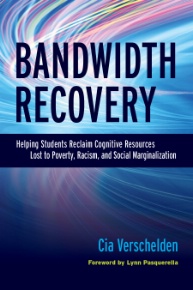
Bandwidth Recovery - Helping Students Reclaim Cognitive Resources Lost to Poverty, Racism, and Social Marginalization
Additional Info:
This book argues that the cognitive resources for learning of over half our young people have been diminished by the negative effects of economic insecurity, discrimination and hostility against non-majority groups based on race, ethnicity, sexual orientation, or gender identity, and other aspects of difference. Recognizing that these students are no different than their peers in terms of cognitive capacity, this book offers a set of strategies and interventions to ...
This book argues that the cognitive resources for learning of over half our young people have been diminished by the negative effects of economic insecurity, discrimination and hostility against non-majority groups based on race, ethnicity, sexual orientation, or gender identity, and other aspects of difference. Recognizing that these students are no different than their peers in terms of cognitive capacity, this book offers a set of strategies and interventions to ...
Additional Info:
This book argues that the cognitive resources for learning of over half our young people have been diminished by the negative effects of economic insecurity, discrimination and hostility against non-majority groups based on race, ethnicity, sexual orientation, or gender identity, and other aspects of difference. Recognizing that these students are no different than their peers in terms of cognitive capacity, this book offers a set of strategies and interventions to rebuild the available cognitive resources necessary to succeed in college and reach their full potential.>br>
Members of these groups systematically experience conditions in their lives that result in chronic stress and, therefore, decreased physical and mental health and social and economic opportunity. The costs of the many kinds of scarcity in their lives – money, health, respect, safety, affirmation, choices, belonging – is seriously reduced “mental bandwidth,” the cognitive and emotional resources needed to deal with making good decisions, learning, healthy relationships, and more. People who are operating with depleted mental bandwidth are less able to succeed in school, starting in childhood, and are much less likely to make it to college. For those who do make it, their bandwidth capacity often interferes with learning, and therefore, persisting and graduating from college.
This book presents variety of evidence-based interventions that have been shown, through implementation in high schools and colleges, to help students to regain bandwidth. They are variously intended for application inside and outside the classroom and address not only cognitive processes but also social-psychological, non-cognitive factors that are relevant to the college environment as a whole.
Beginning with an analysis of the impacts on mental and physical health and cognitive capacity, of poverty, racism, and other forms of social marginalization, Cia Verschelden presents strategies for promoting a growth mindset and self-efficacy, for developing supports that build upon students’ values and prior knowledge and for creating learning environments both in and out of the classroom so students can feel a sense of belonging and community. She addresses issues of stereotyping and exclusion and discusses institutional structures and processes that create identity-safe rather than identity-threat learning environment.
This book is intended for faculty, student affairs professionals, and college and university administrators, all of whom have an interest in creating learning environments where all students have a chance to succeed. (From the Publisher)
Table Of Content:
Foreword by Lynn Pasquerrella
Preface
Acknowledgments
Introduction
Part 1: The Costs of Racism, Poverty, and Social Marginalization
ch 1. Physical Health
ch 2. Mental Health
ch 3. Human Capacity
ch 4. Loss of Cognitive Resources and Bandwidth – Scarcity
Part 2: Sociopsychological Underminers
ch 5. Microaggressions and “Modern Racism”
ch 6. Stereotype Threat
ch 7. Disidentification with Academic Self
ch 8. Belongingness Uncertainty
ch 9. Focus on LGBT Students
Part 3: Interventions that Mitigate the Negative Effects of Poverty and the Underminers
ch 10. Growth Mind-Set
ch 11. Belonging
ch 12. Decreasing Stereotype Threat and Identity Threat
ch 13. Institutional Structures and Processes
ch 14. Case Study – Georgia State University
Conclusion
References
About the Author
Index
This book argues that the cognitive resources for learning of over half our young people have been diminished by the negative effects of economic insecurity, discrimination and hostility against non-majority groups based on race, ethnicity, sexual orientation, or gender identity, and other aspects of difference. Recognizing that these students are no different than their peers in terms of cognitive capacity, this book offers a set of strategies and interventions to rebuild the available cognitive resources necessary to succeed in college and reach their full potential.>br>
Members of these groups systematically experience conditions in their lives that result in chronic stress and, therefore, decreased physical and mental health and social and economic opportunity. The costs of the many kinds of scarcity in their lives – money, health, respect, safety, affirmation, choices, belonging – is seriously reduced “mental bandwidth,” the cognitive and emotional resources needed to deal with making good decisions, learning, healthy relationships, and more. People who are operating with depleted mental bandwidth are less able to succeed in school, starting in childhood, and are much less likely to make it to college. For those who do make it, their bandwidth capacity often interferes with learning, and therefore, persisting and graduating from college.
This book presents variety of evidence-based interventions that have been shown, through implementation in high schools and colleges, to help students to regain bandwidth. They are variously intended for application inside and outside the classroom and address not only cognitive processes but also social-psychological, non-cognitive factors that are relevant to the college environment as a whole.
Beginning with an analysis of the impacts on mental and physical health and cognitive capacity, of poverty, racism, and other forms of social marginalization, Cia Verschelden presents strategies for promoting a growth mindset and self-efficacy, for developing supports that build upon students’ values and prior knowledge and for creating learning environments both in and out of the classroom so students can feel a sense of belonging and community. She addresses issues of stereotyping and exclusion and discusses institutional structures and processes that create identity-safe rather than identity-threat learning environment.
This book is intended for faculty, student affairs professionals, and college and university administrators, all of whom have an interest in creating learning environments where all students have a chance to succeed. (From the Publisher)
Table Of Content:
Foreword by Lynn Pasquerrella
Preface
Acknowledgments
Introduction
Part 1: The Costs of Racism, Poverty, and Social Marginalization
ch 1. Physical Health
ch 2. Mental Health
ch 3. Human Capacity
ch 4. Loss of Cognitive Resources and Bandwidth – Scarcity
Part 2: Sociopsychological Underminers
ch 5. Microaggressions and “Modern Racism”
ch 6. Stereotype Threat
ch 7. Disidentification with Academic Self
ch 8. Belongingness Uncertainty
ch 9. Focus on LGBT Students
Part 3: Interventions that Mitigate the Negative Effects of Poverty and the Underminers
ch 10. Growth Mind-Set
ch 11. Belonging
ch 12. Decreasing Stereotype Threat and Identity Threat
ch 13. Institutional Structures and Processes
ch 14. Case Study – Georgia State University
Conclusion
References
About the Author
Index
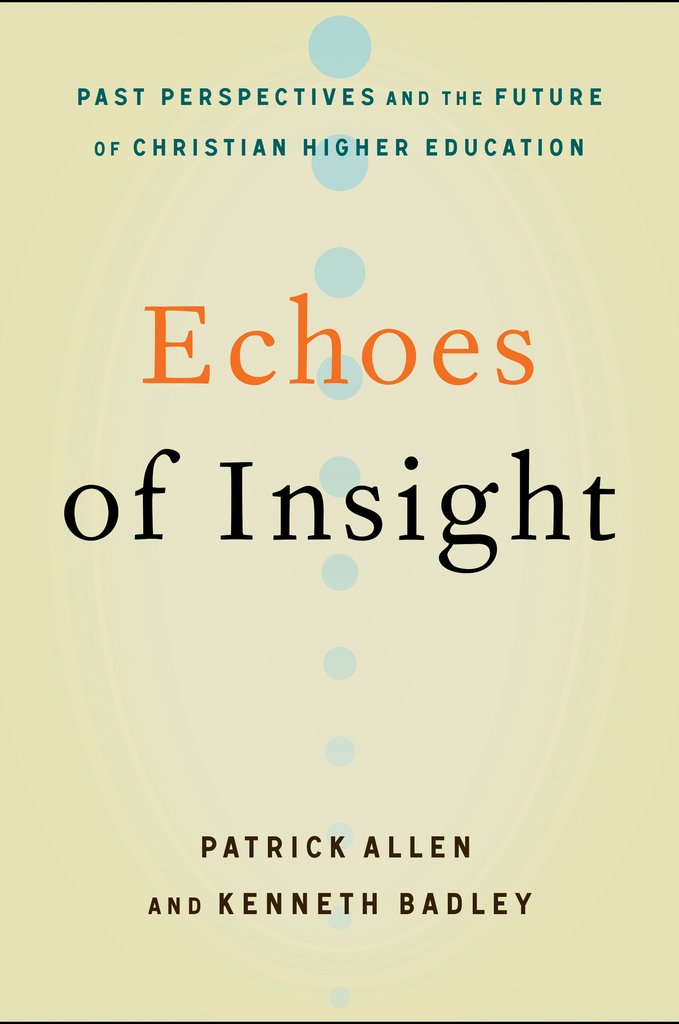
Echoes of Insight: Past Perspectives and the Future of Christian Higher Education
Additional Info:
Click Here for Book Review
Christian higher education needs something richer and deeper. Faith-based institutions yearn for more than business as usual, and Echoes of Insight invites you to listen again to older, forgotten, and perhaps even ignored voices. Designed to stimulate conversation among colleagues, Echoes of Insight offers brief summaries of several thought-provoking writers from the ...
Click Here for Book Review
Christian higher education needs something richer and deeper. Faith-based institutions yearn for more than business as usual, and Echoes of Insight invites you to listen again to older, forgotten, and perhaps even ignored voices. Designed to stimulate conversation among colleagues, Echoes of Insight offers brief summaries of several thought-provoking writers from the ...
Additional Info:
Click Here for Book Review
Christian higher education needs something richer and deeper. Faith-based institutions yearn for more than business as usual, and Echoes of Insight invites you to listen again to older, forgotten, and perhaps even ignored voices. Designed to stimulate conversation among colleagues, Echoes of Insight offers brief summaries of several thought-provoking writers from the last century and encourages a new, vigorous conversation about Christian higher education. (From the Publisher)
Table Of Content:
Preface
Introduction
Part 1: The Classroom and the Student: Instruction, Formation, and Vocation
ch 1. The Aims of Education (1929) (Alfred North Whitehead)
ch 2. The Lost Tools of Learning (1947) (Dorothy L. Sayers)
ch 3. The Banality of Evil (1963) (Hannah Arendt)
ch 4. A Good Man is Hard to Find (1955) (Flannery O'Conner)
ch 5. The Montessori Method (1912) (Maria Montessori)
Part 2: The Faculty and the Administration: Mission, Vision, and Values
ch 6. The Rise and Progress of Universities (1872) (John Henry Newman)
ch 7. The American College (1908) (Abraham Flexner)
ch 8. The Higher Learning in America (1918) (Thorstein Veblen)
ch 9. The Mission of the University (1930) (José Ortega y Gasset)
ch 10. The Higher Learning in America (1936) Robert Maynard Hutchins)
ch 11. The Idea of the University (1946) (Karl Jaspers)
Conclusion
Click Here for Book Review
Christian higher education needs something richer and deeper. Faith-based institutions yearn for more than business as usual, and Echoes of Insight invites you to listen again to older, forgotten, and perhaps even ignored voices. Designed to stimulate conversation among colleagues, Echoes of Insight offers brief summaries of several thought-provoking writers from the last century and encourages a new, vigorous conversation about Christian higher education. (From the Publisher)
Table Of Content:
Preface
Introduction
Part 1: The Classroom and the Student: Instruction, Formation, and Vocation
ch 1. The Aims of Education (1929) (Alfred North Whitehead)
ch 2. The Lost Tools of Learning (1947) (Dorothy L. Sayers)
ch 3. The Banality of Evil (1963) (Hannah Arendt)
ch 4. A Good Man is Hard to Find (1955) (Flannery O'Conner)
ch 5. The Montessori Method (1912) (Maria Montessori)
Part 2: The Faculty and the Administration: Mission, Vision, and Values
ch 6. The Rise and Progress of Universities (1872) (John Henry Newman)
ch 7. The American College (1908) (Abraham Flexner)
ch 8. The Higher Learning in America (1918) (Thorstein Veblen)
ch 9. The Mission of the University (1930) (José Ortega y Gasset)
ch 10. The Higher Learning in America (1936) Robert Maynard Hutchins)
ch 11. The Idea of the University (1946) (Karl Jaspers)
Conclusion
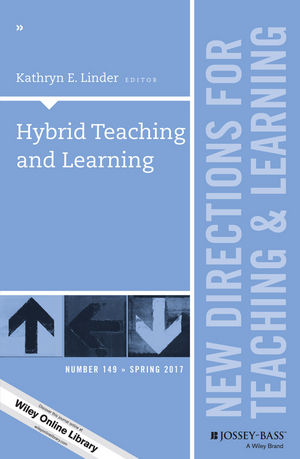
Hybrid Teaching and Learning: New Directions for Teaching and Learning, Number 149
Additional Info:
Click Here for Book Review
Hybrid, or blended, classrooms are expanding on campuses across the United States (and internationally). Intentionally combining in-class instruction with online activities not only aids student learning, it also provides more self-directed, technology-mediated learning experiences for students who will incorporate technology into their professional lives post-college.
In addition to explaining and ...
Click Here for Book Review
Hybrid, or blended, classrooms are expanding on campuses across the United States (and internationally). Intentionally combining in-class instruction with online activities not only aids student learning, it also provides more self-directed, technology-mediated learning experiences for students who will incorporate technology into their professional lives post-college.
In addition to explaining and ...
Additional Info:
Click Here for Book Review
Hybrid, or blended, classrooms are expanding on campuses across the United States (and internationally). Intentionally combining in-class instruction with online activities not only aids student learning, it also provides more self-directed, technology-mediated learning experiences for students who will incorporate technology into their professional lives post-college.
In addition to explaining and defining the phenomenon of hybrid teaching and learning, this volume answers:
• What is hybrid teaching and learning?
• How does it promote student learning?
• Why should faculty and administrators consider it?
• How are its components different from traditional classrooms?
• What are the best practices of hybrid course design?
• How can instructors incorporate accessibility into their hybrid courses?
• What models can be used to train faculty as hybrid teachers?
• Where is it being practiced?
• How can institutions best prepare students for and promote their success in hybrid courses?
• Who should be involved in implementing and supporting these initiatives at the institutional level?
This is the 149th volume of this Jossey-Bass higher education series. It offers a comprehensive range of ideas and techniques for improving college teaching based on the experience of seasoned instructors and the latest findings of educational and psychological researchers. (From the Publisher)
Table Of Content:
EDITOR’S NOTE Kathryn E. Linder
ch 1. Fundamentals of Hybrid Teaching and Learning (Kathryn E. Linder)
ch 2. Evaluating the Outcomes and Impact of Hybrid Courses (Patsy D. Moskal)
ch 3. Hybrid Platforms, Tools, and Resources (Kathryn E. Linder, Linda S. Bruenjes, Sarah A. Smith)
ch 4. Assessing Student Learning in Hybrid Courses (Traci Stromie, Josie G. Baudier)
ch 5. Training Faculty to Teach in Hybrid Settings (Kathryn E. Linder)
ch 6. Hybrid Learning at the Community College (Jason Snart)
ch 7. Collaborations Among Diverse Support Areas for Hybrid Success (Faye Haggar, Bruce Kelley, Weichao Chen)
ch 8. Preparing Students for Success in Hybrid Learning Environments with Academic Resource Centers (Daniel Newman, Michael Dickinson)
ch 9. Accessibility Considerations for Hybrid Courses (Kirsten Behling)
ch 10. Creating an Online Presence for Hybrid Support (Darin Jerke, Eric Mosterd)
ch 11. Supporting Institutional Hybrid Implementations (Thomas B. Cavanagh, Kelvin Thompson, Linda Futch)
INDEX
Click Here for Book Review
Hybrid, or blended, classrooms are expanding on campuses across the United States (and internationally). Intentionally combining in-class instruction with online activities not only aids student learning, it also provides more self-directed, technology-mediated learning experiences for students who will incorporate technology into their professional lives post-college.
In addition to explaining and defining the phenomenon of hybrid teaching and learning, this volume answers:
• What is hybrid teaching and learning?
• How does it promote student learning?
• Why should faculty and administrators consider it?
• How are its components different from traditional classrooms?
• What are the best practices of hybrid course design?
• How can instructors incorporate accessibility into their hybrid courses?
• What models can be used to train faculty as hybrid teachers?
• Where is it being practiced?
• How can institutions best prepare students for and promote their success in hybrid courses?
• Who should be involved in implementing and supporting these initiatives at the institutional level?
This is the 149th volume of this Jossey-Bass higher education series. It offers a comprehensive range of ideas and techniques for improving college teaching based on the experience of seasoned instructors and the latest findings of educational and psychological researchers. (From the Publisher)
Table Of Content:
EDITOR’S NOTE Kathryn E. Linder
ch 1. Fundamentals of Hybrid Teaching and Learning (Kathryn E. Linder)
ch 2. Evaluating the Outcomes and Impact of Hybrid Courses (Patsy D. Moskal)
ch 3. Hybrid Platforms, Tools, and Resources (Kathryn E. Linder, Linda S. Bruenjes, Sarah A. Smith)
ch 4. Assessing Student Learning in Hybrid Courses (Traci Stromie, Josie G. Baudier)
ch 5. Training Faculty to Teach in Hybrid Settings (Kathryn E. Linder)
ch 6. Hybrid Learning at the Community College (Jason Snart)
ch 7. Collaborations Among Diverse Support Areas for Hybrid Success (Faye Haggar, Bruce Kelley, Weichao Chen)
ch 8. Preparing Students for Success in Hybrid Learning Environments with Academic Resource Centers (Daniel Newman, Michael Dickinson)
ch 9. Accessibility Considerations for Hybrid Courses (Kirsten Behling)
ch 10. Creating an Online Presence for Hybrid Support (Darin Jerke, Eric Mosterd)
ch 11. Supporting Institutional Hybrid Implementations (Thomas B. Cavanagh, Kelvin Thompson, Linda Futch)
INDEX
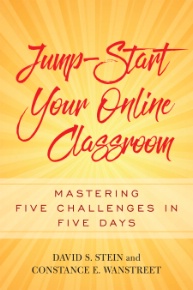
Jump-Start Your Online Classroom: Mastering Five Challenges in Five Days
Additional Info:
Click Here for Book Review
Every year, more online or technology-enhanced learning experiences are added to the landscape of education, and the number of students taking online courses on residential campuses continues to grow. In addition, new instructional tools are creating environments that are mobile, interactive, and collaborative. These trends present challenges to the online classroom, and ...
Click Here for Book Review
Every year, more online or technology-enhanced learning experiences are added to the landscape of education, and the number of students taking online courses on residential campuses continues to grow. In addition, new instructional tools are creating environments that are mobile, interactive, and collaborative. These trends present challenges to the online classroom, and ...
Additional Info:
Click Here for Book Review
Every year, more online or technology-enhanced learning experiences are added to the landscape of education, and the number of students taking online courses on residential campuses continues to grow. In addition, new instructional tools are creating environments that are mobile, interactive, and collaborative. These trends present challenges to the online classroom, and this book will help instructors meet those challenges.
Jump-Start Your Online Classroom prepares a first-time online instructor to successfully manage the first few weeks of a course, including activities to help instructors plan, manage, and facilitate online instruction; and provides resources helpful during the beginning weeks of class. Each chapter is developed around the immediate challenges instructors face when teaching online. The authors address everyday problems and suggest solutions informed by their extensive research and experience. The five challenges, which are designed to be addressed in five days, are to:
• Make the transition to online teaching
• Build online spaces for learning
• Prepare students for online learning
• Manage and facilitating the online classroom
• Assess learner outcomes in an online classroom
The book is based on the authors’ design and facilitation model that identifies five elements comprising an online learning environment: digital tools, participants, social practices, learning community, and outcomes. The book shows how each of those aspects influences instructional practices and interacts to create an environment for a meaningful online educational experience. (From the Publisher)
Table Of Content:
Preface
ch 1. The Online Environment
First Challenge: Making the Transition to Online Teaching
ch 2. Are You Ready to Teach Online?
ch 3. Addressing Concerns About Teaching Online
ch 4. Thinking and Acting Like an Online Instructor
Second Challenge: Building Online Spaces for Learning
ch 5. Building Spaces and Places for Learning
Third Challenge: Preparing Students for Online Learning
ch 6. Preparing Your Students for Online Learning
Fourth Challenge: Managing and Facilitating the Online Classroom
ch 7. Managing and Facilitating the Online Classroom
Fifth Challenge: Assessing Learner Outcomes
ch 8. Assessing Learning in the Online Classroom
ch 9. Reflecting on Your Experience
ch 10. Challenge for the Future: Building Knowledge
Appendices
References
About the Authors
Index
Click Here for Book Review
Every year, more online or technology-enhanced learning experiences are added to the landscape of education, and the number of students taking online courses on residential campuses continues to grow. In addition, new instructional tools are creating environments that are mobile, interactive, and collaborative. These trends present challenges to the online classroom, and this book will help instructors meet those challenges.
Jump-Start Your Online Classroom prepares a first-time online instructor to successfully manage the first few weeks of a course, including activities to help instructors plan, manage, and facilitate online instruction; and provides resources helpful during the beginning weeks of class. Each chapter is developed around the immediate challenges instructors face when teaching online. The authors address everyday problems and suggest solutions informed by their extensive research and experience. The five challenges, which are designed to be addressed in five days, are to:
• Make the transition to online teaching
• Build online spaces for learning
• Prepare students for online learning
• Manage and facilitating the online classroom
• Assess learner outcomes in an online classroom
The book is based on the authors’ design and facilitation model that identifies five elements comprising an online learning environment: digital tools, participants, social practices, learning community, and outcomes. The book shows how each of those aspects influences instructional practices and interacts to create an environment for a meaningful online educational experience. (From the Publisher)
Table Of Content:
Preface
ch 1. The Online Environment
First Challenge: Making the Transition to Online Teaching
ch 2. Are You Ready to Teach Online?
ch 3. Addressing Concerns About Teaching Online
ch 4. Thinking and Acting Like an Online Instructor
Second Challenge: Building Online Spaces for Learning
ch 5. Building Spaces and Places for Learning
Third Challenge: Preparing Students for Online Learning
ch 6. Preparing Your Students for Online Learning
Fourth Challenge: Managing and Facilitating the Online Classroom
ch 7. Managing and Facilitating the Online Classroom
Fifth Challenge: Assessing Learner Outcomes
ch 8. Assessing Learning in the Online Classroom
ch 9. Reflecting on Your Experience
ch 10. Challenge for the Future: Building Knowledge
Appendices
References
About the Authors
Index
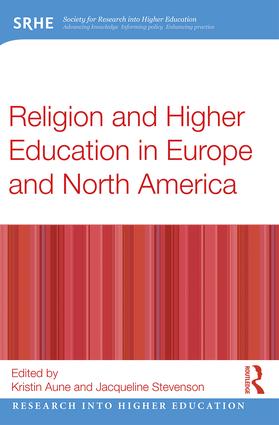
Religion and Higher Education in Europe and North America
Additional Info:
Click Here for Book Review
Religion and Higher Education in Europe and North America illuminates the experiences of staff and students in higher education as they negotiate the university environment. Religious extremism has been rising across Europe, whilst recent attacks have thrown public debate around the place of religion on campus, the role of universities in recognising ...
Click Here for Book Review
Religion and Higher Education in Europe and North America illuminates the experiences of staff and students in higher education as they negotiate the university environment. Religious extremism has been rising across Europe, whilst recent attacks have thrown public debate around the place of religion on campus, the role of universities in recognising ...
Additional Info:
Click Here for Book Review
Religion and Higher Education in Europe and North America illuminates the experiences of staff and students in higher education as they negotiate the university environment. Religious extremism has been rising across Europe, whilst recent attacks have thrown public debate around the place of religion on campus, the role of universities in recognising and managing religious fundamentalism and freedom of speech on campus into sharper focus.
Despite these debates, research exploring religion on campus has been largely absent from discourse on higher education outside of America, with policy and practices designed to deal with religion on campus largely founded on supposition rather than evidence. This book speaks into that void, including results from recent studies in the field which form an empirically grounded base from a broad variety of perspectives on religion at universities. Aiming to offer a deeper perspective, more dialogue, and engagement on the experiences of students, Religion and Higher Education in Europe and North America presents us not only with an opportunity to counter growing trends of intolerance, but for people to connect with the humanity of others.
Focusing on what research reveals about staff and students’ experiences, it incorporates research from different academic disciplines including sociology, education, social policy, theology and religious studies, and across different faith and belief groups. This thought-provoking and challenging volume features chapters written by researchers involved in informing policy and practice relating to religion and belief in higher education in the UK, US, Canada, France and the Netherlands . Spanning the academic-practitioner divide, students and academics interested in the sociology of religion and of higher education, as well as those responsible for the practical management of campus life, will find this text of particular importance. (From the Publisher)
Table Of Content:
Introduction
Part One. Patterns and Trends: Insights from Survey Research
ch 1. Religion and Higher Education in the United States: Extending the Research
ch 2. How Religion or Belief frame Participation and Access in UK Higher Education
ch 3. Religiously Unaffiliated Students in the United States: Characteristics, Experiences, and Outcomes
Part Two: The Religious Student Experience: Learning From Qualitative Studies
ch 4. The Contested Campus: Christian Students in UK Universities
ch 5. Invisible Islam: Muslim Student Migrants' Everyday Practices in French Secular Universities
ch 6. "My Horns Come Out in My Attitude!" Negotiating Jewish Student Identity and the Politics of Identification in Canada Charlotte Schallié
ch 7. Samosas and Simran: University Sikh Societies in Britain
ch 8. Secularism, Free Speech and the Public University: Student Engagement with Israel-Palestine in a British Campus
ch 9. Navigating the Secular: Religious Students’ Experiences of Attending a Red-brick University
Part Three: The Place of Policies, Structures and Curricula
ch 10. Islamic Studies in UK Universities: Challenging Curricula
ch 11. From Cognitive Science to Personal Leadership: the Role of Religion and Personal Life Orientation in Curriculum Development Processes Within the Domain of Religious Studies
ch 12. Do Religion and Belief Have a Place in 'The Student Experience'?
ch 13. Developing Religious Literacy in Higher Education
List of Contributors
Index
Click Here for Book Review
Religion and Higher Education in Europe and North America illuminates the experiences of staff and students in higher education as they negotiate the university environment. Religious extremism has been rising across Europe, whilst recent attacks have thrown public debate around the place of religion on campus, the role of universities in recognising and managing religious fundamentalism and freedom of speech on campus into sharper focus.
Despite these debates, research exploring religion on campus has been largely absent from discourse on higher education outside of America, with policy and practices designed to deal with religion on campus largely founded on supposition rather than evidence. This book speaks into that void, including results from recent studies in the field which form an empirically grounded base from a broad variety of perspectives on religion at universities. Aiming to offer a deeper perspective, more dialogue, and engagement on the experiences of students, Religion and Higher Education in Europe and North America presents us not only with an opportunity to counter growing trends of intolerance, but for people to connect with the humanity of others.
Focusing on what research reveals about staff and students’ experiences, it incorporates research from different academic disciplines including sociology, education, social policy, theology and religious studies, and across different faith and belief groups. This thought-provoking and challenging volume features chapters written by researchers involved in informing policy and practice relating to religion and belief in higher education in the UK, US, Canada, France and the Netherlands . Spanning the academic-practitioner divide, students and academics interested in the sociology of religion and of higher education, as well as those responsible for the practical management of campus life, will find this text of particular importance. (From the Publisher)
Table Of Content:
Introduction
Part One. Patterns and Trends: Insights from Survey Research
ch 1. Religion and Higher Education in the United States: Extending the Research
ch 2. How Religion or Belief frame Participation and Access in UK Higher Education
ch 3. Religiously Unaffiliated Students in the United States: Characteristics, Experiences, and Outcomes
Part Two: The Religious Student Experience: Learning From Qualitative Studies
ch 4. The Contested Campus: Christian Students in UK Universities
ch 5. Invisible Islam: Muslim Student Migrants' Everyday Practices in French Secular Universities
ch 6. "My Horns Come Out in My Attitude!" Negotiating Jewish Student Identity and the Politics of Identification in Canada Charlotte Schallié
ch 7. Samosas and Simran: University Sikh Societies in Britain
ch 8. Secularism, Free Speech and the Public University: Student Engagement with Israel-Palestine in a British Campus
ch 9. Navigating the Secular: Religious Students’ Experiences of Attending a Red-brick University
Part Three: The Place of Policies, Structures and Curricula
ch 10. Islamic Studies in UK Universities: Challenging Curricula
ch 11. From Cognitive Science to Personal Leadership: the Role of Religion and Personal Life Orientation in Curriculum Development Processes Within the Domain of Religious Studies
ch 12. Do Religion and Belief Have a Place in 'The Student Experience'?
ch 13. Developing Religious Literacy in Higher Education
List of Contributors
Index
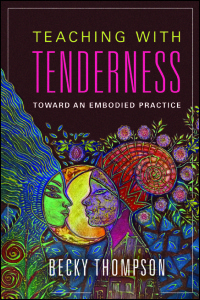
Teaching with Tenderness - Toward an Embodied Practice
Additional Info:
Click Here for Book Review
Imagine a classroom that explores the twinned ideas of embodied teaching and a pedagogy of tenderness. Becky Thompson envisions such a curriculum--and a way of being--that promises to bring about a sea change in education.
Teaching with Tenderness follows in the tradition of bell hooks's Teaching to Transgress and Paulo ...
Click Here for Book Review
Imagine a classroom that explores the twinned ideas of embodied teaching and a pedagogy of tenderness. Becky Thompson envisions such a curriculum--and a way of being--that promises to bring about a sea change in education.
Teaching with Tenderness follows in the tradition of bell hooks's Teaching to Transgress and Paulo ...
Additional Info:
Click Here for Book Review
Imagine a classroom that explores the twinned ideas of embodied teaching and a pedagogy of tenderness. Becky Thompson envisions such a curriculum--and a way of being--that promises to bring about a sea change in education.
Teaching with Tenderness follows in the tradition of bell hooks's Teaching to Transgress and Paulo Freire's Pedagogy of the Oppressed, inviting us to draw upon contemplative practices (yoga, meditation, free writing, mindfulness, ritual) to keep our hearts open as we reckon with multiple injustices. Teaching with tenderness makes room for emotion, offer a witness for experiences people have buried, welcomes silence, breath and movement, and sees justice as key to our survival. It allows us to rethink our relationship to grading, office hours, desks, and faculty meetings, sees paradox as a constant companion, moves us beyond binaries; and praises self and community care.
Tenderness examines contemporary challenges to teaching about race, gender, class, nationality, sexuality, religion, and other hierarchies. It examines the ethical, emotional, political, and spiritual challenges of teaching power-laden, charged issues and the consequences of shifting power relations in the classroom and in the community. Attention to current contributions in the areas of contemplative practices, trauma theory, multiracial feminist pedagogy, and activism enable us to envision steps toward a pedagogy of liberation. The book encourages active engagement and makes room for self-reflective learning, teaching, and scholarship. (From the Publisher)
Table Of Content:
Series Editor’s Foreword (AnaLouise Keating)
Acknowledgments
Introduction
ch 1. Thatched Roof, No Walls
ch 2. Inviting Bodies
ch 3. Creating Rituals
ch 4. Why We Flee
ch 5. To You, I Belong
ch 6. Our Bodies in the World
Notes
Bibliography
Index
Click Here for Book Review
Imagine a classroom that explores the twinned ideas of embodied teaching and a pedagogy of tenderness. Becky Thompson envisions such a curriculum--and a way of being--that promises to bring about a sea change in education.
Teaching with Tenderness follows in the tradition of bell hooks's Teaching to Transgress and Paulo Freire's Pedagogy of the Oppressed, inviting us to draw upon contemplative practices (yoga, meditation, free writing, mindfulness, ritual) to keep our hearts open as we reckon with multiple injustices. Teaching with tenderness makes room for emotion, offer a witness for experiences people have buried, welcomes silence, breath and movement, and sees justice as key to our survival. It allows us to rethink our relationship to grading, office hours, desks, and faculty meetings, sees paradox as a constant companion, moves us beyond binaries; and praises self and community care.
Tenderness examines contemporary challenges to teaching about race, gender, class, nationality, sexuality, religion, and other hierarchies. It examines the ethical, emotional, political, and spiritual challenges of teaching power-laden, charged issues and the consequences of shifting power relations in the classroom and in the community. Attention to current contributions in the areas of contemplative practices, trauma theory, multiracial feminist pedagogy, and activism enable us to envision steps toward a pedagogy of liberation. The book encourages active engagement and makes room for self-reflective learning, teaching, and scholarship. (From the Publisher)
Table Of Content:
Series Editor’s Foreword (AnaLouise Keating)
Acknowledgments
Introduction
ch 1. Thatched Roof, No Walls
ch 2. Inviting Bodies
ch 3. Creating Rituals
ch 4. Why We Flee
ch 5. To You, I Belong
ch 6. Our Bodies in the World
Notes
Bibliography
Index
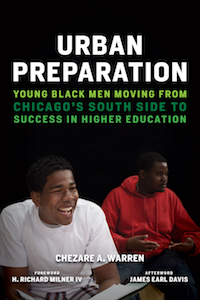
Urban Preparation - Young Black Men Moving from Chicago's South Side to Success in Higher Education
Additional Info:
Click Here for Book Review
Chezare A. Warren chronicles the transition of a cohort of young Black males from Urban Prep Charter Academy for Young Men to their early experiences in higher education. A rich and closely observed account of a mission-driven school and its students, Urban Preparation makes a significant contribution to our understanding of how ...
Click Here for Book Review
Chezare A. Warren chronicles the transition of a cohort of young Black males from Urban Prep Charter Academy for Young Men to their early experiences in higher education. A rich and closely observed account of a mission-driven school and its students, Urban Preparation makes a significant contribution to our understanding of how ...
Additional Info:
Click Here for Book Review
Chezare A. Warren chronicles the transition of a cohort of young Black males from Urban Prep Charter Academy for Young Men to their early experiences in higher education. A rich and closely observed account of a mission-driven school and its students, Urban Preparation makes a significant contribution to our understanding of how young males of color can best be served in schools throughout the United States today.
A founding teacher at Urban Prep, Warren offers a detailed exploration of what this single-sex public high school on the South Side of Chicago has managed to accomplish amid profoundly challenging circumstances. He provides a comprehensive portrait of the school—its leaders, teachers, and professional staff; its students; and the community that the school aims to serve—and highlights how preparation for higher education is central to its mission.
Warren focuses on three main goals: to describe Urban Prep’s plans and efforts to prepare young Black males for college; to understand how race, community, poverty, and the school contributed, in complex and interrelated ways, to the academic goals of these students; and to offer a wide-ranging set of conclusions about the school environments and conditions that might help young Black males throughout the country succeed in high school and college. (From the Publisher)
Table Of Content:
Foreword by H. Richard Milner
Urban Preparation: An Introduction
ch 1. Improving Urban Education for Young Black Men and Boys with Derrick R. Brooms
ch 2. Living and Learning on the South Side of Chicago
ch 3. UP Years 1 and 2: Schooling Environment
ch 4. UP Years 3 and 4: Preparation for College
ch 5. College Transition, Persistence, and Completion
ch 6. Reimagining the P–20 Education Pipeline for Young Black Men and Boys with Derrick R. Brooms
ch 7. Recommendations for Contemporary Urban Education Reform
Appendix Research Methods
Afterword by James Earl Davis
Notes
Acknowledgments
About the Author
Index
Click Here for Book Review
Chezare A. Warren chronicles the transition of a cohort of young Black males from Urban Prep Charter Academy for Young Men to their early experiences in higher education. A rich and closely observed account of a mission-driven school and its students, Urban Preparation makes a significant contribution to our understanding of how young males of color can best be served in schools throughout the United States today.
A founding teacher at Urban Prep, Warren offers a detailed exploration of what this single-sex public high school on the South Side of Chicago has managed to accomplish amid profoundly challenging circumstances. He provides a comprehensive portrait of the school—its leaders, teachers, and professional staff; its students; and the community that the school aims to serve—and highlights how preparation for higher education is central to its mission.
Warren focuses on three main goals: to describe Urban Prep’s plans and efforts to prepare young Black males for college; to understand how race, community, poverty, and the school contributed, in complex and interrelated ways, to the academic goals of these students; and to offer a wide-ranging set of conclusions about the school environments and conditions that might help young Black males throughout the country succeed in high school and college. (From the Publisher)
Table Of Content:
Foreword by H. Richard Milner
Urban Preparation: An Introduction
ch 1. Improving Urban Education for Young Black Men and Boys with Derrick R. Brooms
ch 2. Living and Learning on the South Side of Chicago
ch 3. UP Years 1 and 2: Schooling Environment
ch 4. UP Years 3 and 4: Preparation for College
ch 5. College Transition, Persistence, and Completion
ch 6. Reimagining the P–20 Education Pipeline for Young Black Men and Boys with Derrick R. Brooms
ch 7. Recommendations for Contemporary Urban Education Reform
Appendix Research Methods
Afterword by James Earl Davis
Notes
Acknowledgments
About the Author
Index
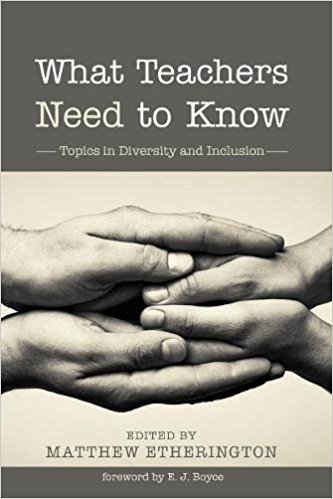
What Teachers Need to Know: Topics in Diversity and Inclusion
Additional Info:
Click Here for Book Review
Every generation has sought to make teaching and learning more inclusive and equitable, but pesky questions always remain, such as, how can teaching and learning be conducted in ways that satisfies and respects everyone? What are the parameters of an inclusive pedagogy? Who defines its principles? How should these principles be taught ...
Click Here for Book Review
Every generation has sought to make teaching and learning more inclusive and equitable, but pesky questions always remain, such as, how can teaching and learning be conducted in ways that satisfies and respects everyone? What are the parameters of an inclusive pedagogy? Who defines its principles? How should these principles be taught ...
Additional Info:
Click Here for Book Review
Every generation has sought to make teaching and learning more inclusive and equitable, but pesky questions always remain, such as, how can teaching and learning be conducted in ways that satisfies and respects everyone? What are the parameters of an inclusive pedagogy? Who defines its principles? How should these principles be taught and by whom? And by what authority shall they be grounded? These types of thorny questions occupy the essence of educators and the authors of this book. This book is about teachers, educators, and topics related to inclusion. Teachers and educators have a lot to know, therefore the topics are broad and relevant to the times. What should teachers know about special needs, religion and spirituality, Aboriginality, the environment, tolerance, and school choice? Although teachers have knowledge of their subject matter, knowledge alone is not sufficient. They must know and understand how people learn. A teacher must also care deeply about who they teach. And this "teacher knowledge" grows and changes over time as teachers become more experienced, informed, skilled, and wiser. At the same time no teacher preparation will be sufficient because there will always be discussions that were never had and knowledge that was never shared. Time has its costs and there is only so much a formal education can prepare someone. This book helps to satisfy a cavity in learning for teachers and educators in general. (From the Publisher)
Table Of Content:
Introduction: Education for All by Matthew Etherington
Part One: Ethics
ch 1. Family Pedagogy: (Re)claiming a Topic of Inclusion for Teacher Education (Sherick Hughes)
ch 2. A Role for Teachers and Teacher Education in Developing InclusivePractice (Martyn Rouse)
ch 3. Achieving Culturally Sensitive Education with Faith-Informed Discourse (Jonathan Anuik)
ch 4. Toward an Ecologically Informed Paradigm in Thinking about Educational Reforms (Chet Bowers)
ch 5. Self-Worth and Meaning-Oriented Education (Eva Maria Waibel)
ch 6. Uncritical Critical Thinking in Teaching and Learning: Smashing Down “Old” Ways of Thinking (Matthew Etherington)
ch 7. Universities, Higher Education, and Ideological Diversity: Insights from Moral Foundations Theory (James Dalziel)
Part Two: Inclusion and Teacher Management
ch 8. The Benefits of Choice in Education: A Canadian Perspective (Peter J. Froese)
ch 9. Full Inclusion and Learners with Exceptional Needs: Educational Ideology vs. Practical Pedagogy (Ken Pudlas)
ch 10. Building Resilience in Children in Relation to Bullying, Discipline, and Classroom Management (Lucinda Spaulding)
ch 11. Education and Mental Health: A Parent Perspective (Karen Copeland)
ch 12. Between Strangers and Friends: Toward a Theory of Hospitality, Reciprocity, and Respect for Difference in “Special Needs” Education (Bruce Shelvey)
ch 13. The Teacher’s Authority (Ken Badley)
Part Three: Worldview and Story
ch 14. Worldview Inclusion in Public Schooling (John Valk)
ch 15. What Teachers Need to Know about Tolerance (Matthew Etherington)
ch 16. Experience, Education, and Story: A Transcultural Teacher Narrative (Edward R. Howe)
ch 17. Considering the Nature of Science and Religion in Science Education (Adam Forsyth)
ch 18. Epistemology, Religion, and the Politics of Inclusion in OntarioPublic Education (Leo Van Arragon)
ch 19. The Reconception of Story in Children’s Picture Books: Will AnyStory Do? (Christina Belcher)
ch 20. Inclusion and Playing in the In-Between (Cynthia . Beckett)
Click Here for Book Review
Every generation has sought to make teaching and learning more inclusive and equitable, but pesky questions always remain, such as, how can teaching and learning be conducted in ways that satisfies and respects everyone? What are the parameters of an inclusive pedagogy? Who defines its principles? How should these principles be taught and by whom? And by what authority shall they be grounded? These types of thorny questions occupy the essence of educators and the authors of this book. This book is about teachers, educators, and topics related to inclusion. Teachers and educators have a lot to know, therefore the topics are broad and relevant to the times. What should teachers know about special needs, religion and spirituality, Aboriginality, the environment, tolerance, and school choice? Although teachers have knowledge of their subject matter, knowledge alone is not sufficient. They must know and understand how people learn. A teacher must also care deeply about who they teach. And this "teacher knowledge" grows and changes over time as teachers become more experienced, informed, skilled, and wiser. At the same time no teacher preparation will be sufficient because there will always be discussions that were never had and knowledge that was never shared. Time has its costs and there is only so much a formal education can prepare someone. This book helps to satisfy a cavity in learning for teachers and educators in general. (From the Publisher)
Table Of Content:
Introduction: Education for All by Matthew Etherington
Part One: Ethics
ch 1. Family Pedagogy: (Re)claiming a Topic of Inclusion for Teacher Education (Sherick Hughes)
ch 2. A Role for Teachers and Teacher Education in Developing InclusivePractice (Martyn Rouse)
ch 3. Achieving Culturally Sensitive Education with Faith-Informed Discourse (Jonathan Anuik)
ch 4. Toward an Ecologically Informed Paradigm in Thinking about Educational Reforms (Chet Bowers)
ch 5. Self-Worth and Meaning-Oriented Education (Eva Maria Waibel)
ch 6. Uncritical Critical Thinking in Teaching and Learning: Smashing Down “Old” Ways of Thinking (Matthew Etherington)
ch 7. Universities, Higher Education, and Ideological Diversity: Insights from Moral Foundations Theory (James Dalziel)
Part Two: Inclusion and Teacher Management
ch 8. The Benefits of Choice in Education: A Canadian Perspective (Peter J. Froese)
ch 9. Full Inclusion and Learners with Exceptional Needs: Educational Ideology vs. Practical Pedagogy (Ken Pudlas)
ch 10. Building Resilience in Children in Relation to Bullying, Discipline, and Classroom Management (Lucinda Spaulding)
ch 11. Education and Mental Health: A Parent Perspective (Karen Copeland)
ch 12. Between Strangers and Friends: Toward a Theory of Hospitality, Reciprocity, and Respect for Difference in “Special Needs” Education (Bruce Shelvey)
ch 13. The Teacher’s Authority (Ken Badley)
Part Three: Worldview and Story
ch 14. Worldview Inclusion in Public Schooling (John Valk)
ch 15. What Teachers Need to Know about Tolerance (Matthew Etherington)
ch 16. Experience, Education, and Story: A Transcultural Teacher Narrative (Edward R. Howe)
ch 17. Considering the Nature of Science and Religion in Science Education (Adam Forsyth)
ch 18. Epistemology, Religion, and the Politics of Inclusion in OntarioPublic Education (Leo Van Arragon)
ch 19. The Reconception of Story in Children’s Picture Books: Will AnyStory Do? (Christina Belcher)
ch 20. Inclusion and Playing in the In-Between (Cynthia . Beckett)